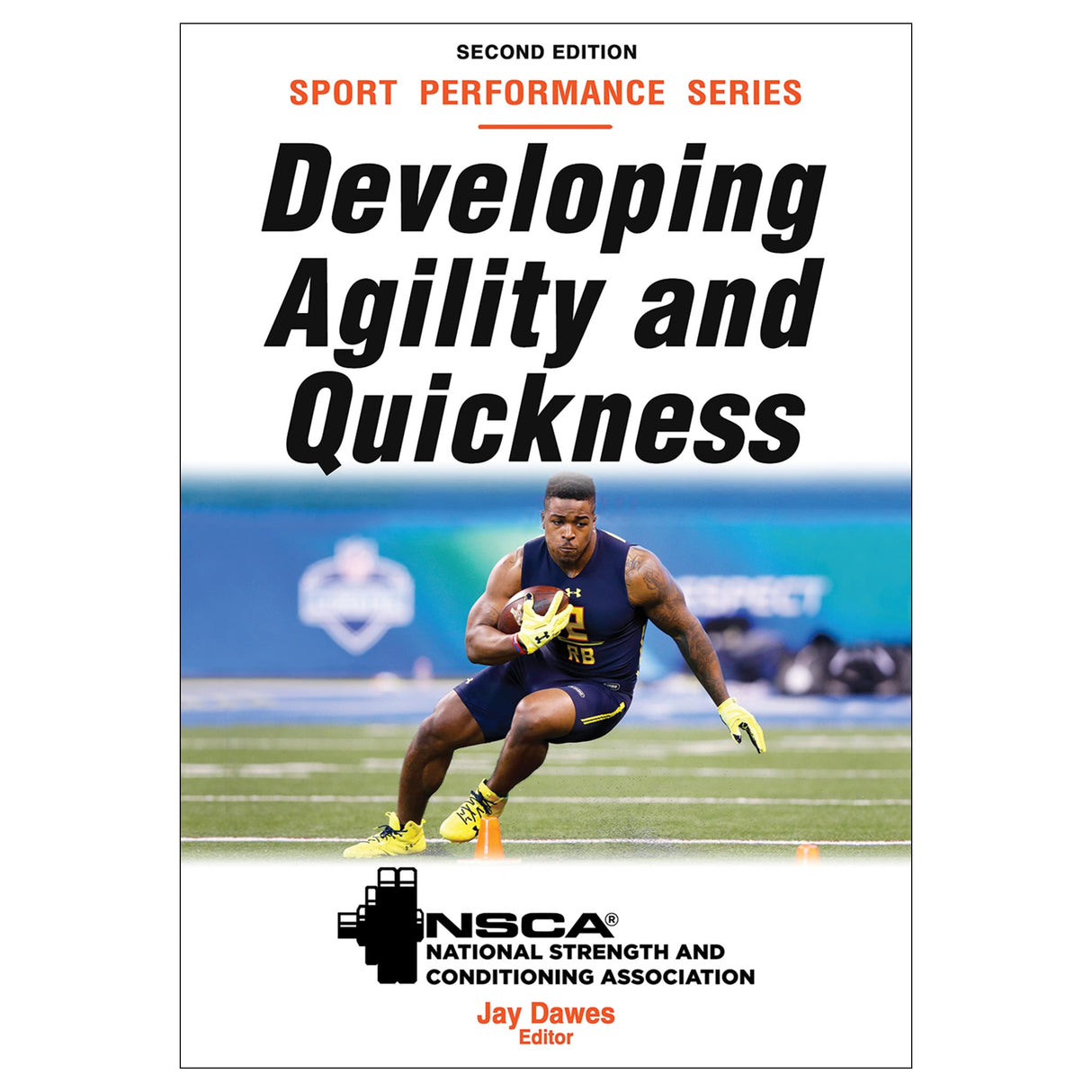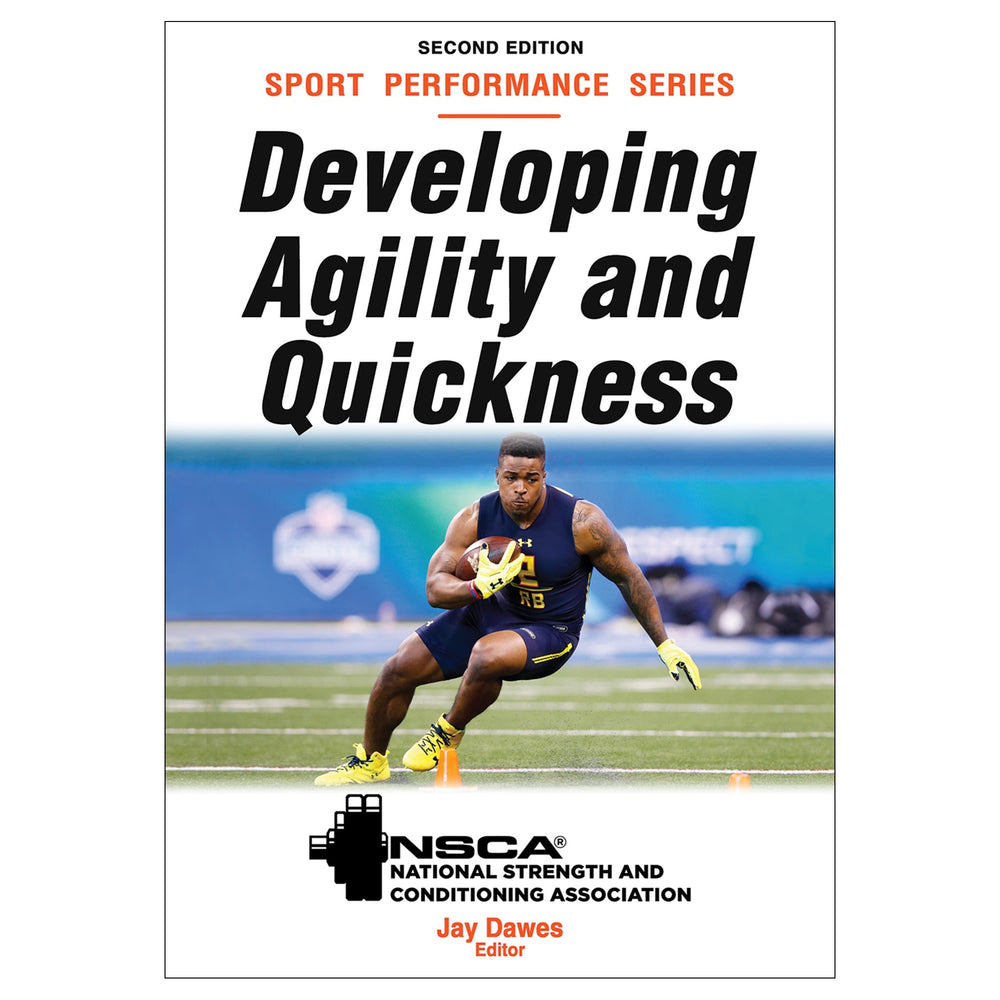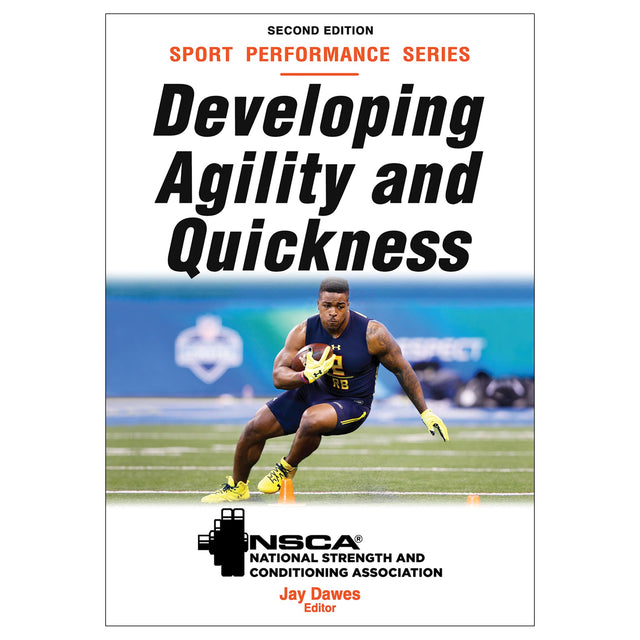Developing Agility and Quickness-2nd Edition
Author: Jay Dawes
$24.95 USD
Most competitive sports require rapid whole-body movements in which athletes need to accelerate, decelerate, and change direction in response to game situations. That’s why coaches, athletes, and strength and conditioning professionals are constantly searching for the most effective ways to improve agility and quickness.
As the world’s leading organization in the field of sport conditioning, the National Strength and Conditioning Association (NSCA) is at the forefront of such knowledge. In Developing Agility and Quickness, Second Edition, 19 of the NSCA’s leading experts provide evidence-based assessment tools, exercises, drills, and training regimens to achieve that aim:
• More than 130 drills—with instructions, photos, and diagrams—offer a smorgasbord of proven activities to enhance athletes’ ability to rapidly accelerate or decelerate in three dimensions.
• Twelve agility and quickness tests provide gauges of present abilities and methods to measure progress.
• Guidelines for tailoring training to specific needs present a blueprint for increasing change of direction speed and explosive movement.
• New chapters on warm-up methods and age and sex considerations prepare athletes to get the most from their training.
• Sport-specific training plans foster peak performance for athletes in 15 specific sports.
Developing Agility and Quickness is an essential training guide for athletes and coaches seeking to excel in today’s fast-action sports. The drills and training programs in this book will get you a step ahead of the competition, whether you’re on the court or on the turf.
Earn continuing education credits/units! A continuing education course and exam that uses this book is also available. It may be purchased separately or as part of a package that includes all the course materials and exam.
Audience
Athletes and professionals working with athletes, including strength and conditioning coaches, personal trainers, and sport coaches.
Chapter 1. Developing Change of Direction Speed
Chapter 2. Factors Determining Quickness
Chapter 3. Warm-Up Methods and Techniques for Agility Training
Chapter 4. Age and Sex Considerations
Chapter 5. Testing, Assessment, and Monitoring of Agility and Quickness
Chapter 6. Change of Direction Speed Drills
Chapter 7. Quickness Drills
Chapter 8. Agility and Quickness Program Design
Chapter 9. Sport-Specific Agility and Quickness Training
ABOUT THE NSCA
The National Strength and Conditioning Association (NSCA) is the world’s leading organization in the field of sport conditioning. Drawing on the resources and expertise of the most recognized professionals in strength training and conditioning, sport science, performance research, education, and sports medicine, the NSCA is the world’s trusted source of knowledge and training guidelines for coaches and athletes. The NSCA provides the crucial link between the lab and the field.
ABOUT THE EDITOR
Jay Dawes, PhD, CSCS,*D, NSCA-CPT,*D, FNSCA, is an associate professor of strength and conditioning and the program coordinator for the masters of science in strength and conditioning program at the University of Colorado in Colorado Springs. He has worked as an athletic performance coordinator, strength and performance coach, personal trainer, educator, and postrehabilitation specialist for over 20 years. Dawes also frequently coaches and provides sport science support to numerous elite and professional teams and law enforcement, fire, and military groups. His primary research interests are improving and measuring performance for tactical athletes and first responders and enhancing athletic performance.
Dawes is certified by the National Strength and Conditioning Association (NSCA) as a strength and conditioning specialist (CSCS) and as a personal trainer (NSCA-CPT); by the American College of Sports Medicine as a health fitness specialist (ACSM-HFS); and by the Australian Strength and Conditioning Association as a level 2 strength and conditioning coach. He was also recognized as a fellow of the NSCA in 2009.
Dawes is the author of Complete Guide to TRX® Suspension Training (Human Kinetics, 2017) and coauthor of Maximum Interval Training (Human Kinetics, 2015), and he has written numerous book chapters and articles on improving sports and tactical performance.
He lives in Colorado Springs, Colorado.





